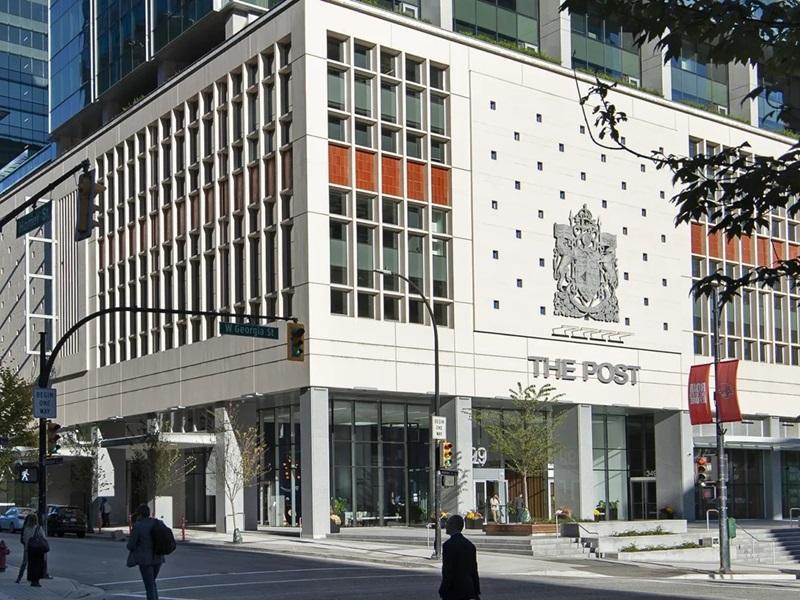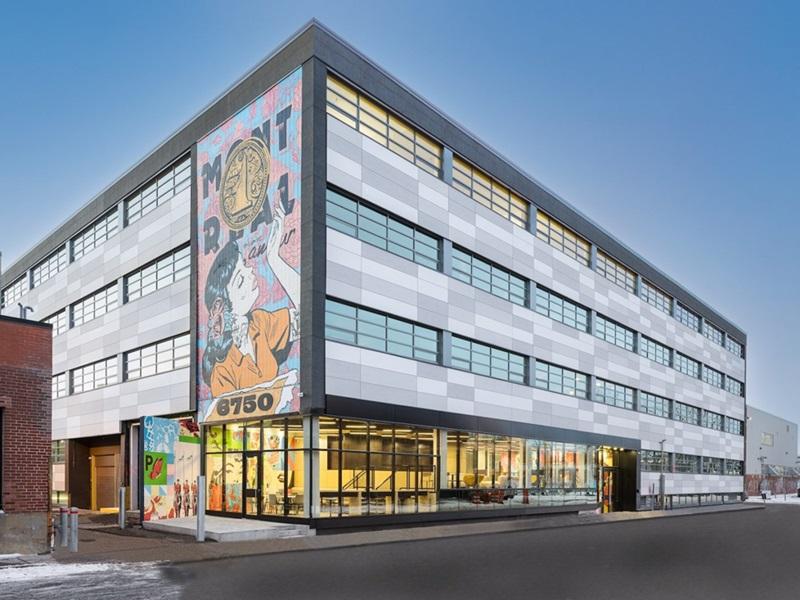
A tract of vacant land, owned by the National Capital Commission in east Ottawa, is being turned into a new industrial business park by local developer Avenue31. (Courtesy Avenue31)
For decades, Ottawa and the National Capital Region were afterthoughts in the industrial real estate market. No more.
A dramatic change in thinking about commerce and supply chains has thrust the city of just over a million people onto the radars of companies which – quite justifiably considering conditions at the time – would barely have given it a passing glance five or 10 years ago.
Though it’s still a relatively small player with an inventory of just over 46 million square feet, Ottawa is becoming a significant distribution hub for e-commerce giant Amazon. Major developers and owners such as Broccolini, PROREIT, Manulife Investment Management, newcomer Avenue31 and others are becoming more and more active.
“While Ottawa certainly isn’t as large as some of the other markets, we are in lockstep with every other market in Canada,” said Warren Wilkinson, the managing director of Colliers’ Ottawa office, while introducing an industrial panel at the recent virtual Ottawa Real Estate Forum.
Availability is at 2.3 per cent and declining. Leasing rates are among the highest in Canada at $11.50 per square foot (up six per cent year-over-year) and rising.
Major new industrial developments
There’s well over three million square feet of new space currently under construction (much of it in a new 2.88-million-square-foot Amazon warehouse) and several other major projects in pre-development.
Just east of the city, in Casselman, Ford just announced a long-term lease for a 531,000-square-foot distribution centre being built by Montreal’s RoseFellow and Bertone Development Corp. to service Eastern Canada.
All this is occurring in a market which has traditionally been dominated by small- and medium-bay product for firms servicing local clients only. Only 23 per cent of the city’s existing industrial inventory involves spaces larger than 50,000 square feet.
“Quite frankly for groups looking to occupy or purchase space in Ottawa, larger than 50,000 square feet, the opportunity is limited,” Wilkinson noted. Actually, it’s almost non-existent.
So the market is racing to catch up with two suddenly red-hot trends – the e-commerce explosion and the realization that international supply chains are vulnerable to events such as pandemics and other potential disruptions.
Supply chain woes add to industrial demands
“Why is there so much development going on?” Wilkinson asked, then proceeded to answer his own question.
“The one real reason is, I think during the pandemic what we’ve all noticed is what real demand looks like. We also had some champions in the industry step forward and start building new industrial supply.”
Glen D’Silva, managing director, portfolio manager for Manulife Investment Management, took that a step further, noting companies are now facing serious product and raw materials delays.
“If they are supplying a manufacturer, they can’t afford to have delays,” he said. “The just-in-time delivery system has failed us. Everybody is going to want those components closer to home.
“I think you’re going to see a lot more manufacturing of those components within North America so you can have more distribution of those within North America and not from overseas.
“We appeared not to learn from SARS and didn’t have supplies on hand when COVID hit, and I don’t think any government is going to let this happen again. People will remember this very clearly.”
Hidden advantage for Ottawa industrial
Industrial and warehousing expansion is happening across Canada, but Ottawa has one advantage which, perhaps, had not been readily apparent in the past.
“Ottawa has the greatest access to people within one working day,” said Ryan Semple, director of business development for Avenue31.
The Ottawa-base firm has amassed several development sites in the area and is constructing Phase 1 of a new industrial park on land leased from the federal National Capital Commission along Highway 417 in the East End.
It has plans to build almost two million square feet of industrial during the next few years.
Semple cited a 2020 CBRE Ottawa Industrial Update report which examined how many people live within one day’s driving access from major Canadian cities (roughly 400 kilometres in one direction). Ottawa is within one day of about 15 million people – a larger reach than either Montreal or Toronto.
“So businesses that want to provide product to their consumers within one day are now looking at Ottawa as a place to relocate or consolidate,” he said.

A concept plan submitted by Broccolini calls for a building of up to 700,000 square feet, and almost 100 feet in height, in a south Ottawa location along Highway 416. (Courtesy Broccolini)
Broccolini is currently leading that charge. The Montreal-based firm built a million-square-foot East End distribution centre for Amazon two years ago and is developing the massive five-level Amazon facility in South-End Barrhaven.
Among its other holdings is a plot of land just outside the urban boundary where it plans a 700,000-square-foot distribution centre which would tower almost 100 feet high.
Challenges to find entitled, serviced land
The firm’s vice-president of real estate, James Beach, noted that despite these huge projects there are significant development challenges in the city, both inside and outside the Capital Greenbelt.
“Challenges within the Greenbelt (are) land availability, there is not a lot of it available,” Beach said. “If land is available, use of the entitlement process to render it appropriate for these new-style, e-commerce developments can be onerous and sometimes a very long process.
“Outside the urban boundary? Lots of land, but we kind of come back to the same point, zoning. Does the zoning exist? And even if it does, does the infrastructure exist to support the zoning?”
Yet the demand remains. Both for development and to acquire completed assets. Broccolini sold a 90 per cent interest in the first Amazon distribution centre to Concert.
PROREIT sees strong Ottawa industrial fundamentals
Acquisitions are where PROREIT has been active in the city. As the trust has increased its industrial portfolio weighting, it acquired three additional Ottawa properties comprising 283,000 square feet earlier this year and is looking for more.
“We’ve pivoted recently quite significantly to industrial,” said Mark O’Brien, PROREIT’s managing director of operations. He lauded the region as: “Very stable, good demographics, good household income and good population growth, so certainly it’s a market we want to grow in.”
He also said the tight vacancy is good news for firms holding existing product. The restrictions “just help our assets grow in value.
“Take a bandwith of between four and 10 per cent annual growth on rental rates. You can close your eyes and run industrial product and get a 20 per cent cash IRR without having to do anything, and you add cap rate compression on top of that.
“I mean, you realize how many people are trying to chase these assets. It’s all to our benefit.”
Relieving these pressures can only come from one source. Semple cited the letters ASWL: “It all starts with land.
“It all starts with shovel-ready land, It all starts with zoned land. . . . That’s going to be the biggest challenge, shovel-ready zoned land.”
Beach said there is land available, much of it controlled by government, or NGO-type agencies. However, that doesn’t mean it will be easy to build on. The South-End Ottawa airport authority property is one example.
“They have several hundred acres of industrial airside land available and relatively ready to go, however we go back to the discussion about entitlement, you go back to the discussion about servicing, transportation.
“Those lands need a little bit more work and really it will take a catalyst tenant and a large-scale development to warrant a first phase and for those infrastructure dollars to be implemented.”
He said it will happen. The only question is, when?
EDITOR’S NOTE: This article was updated to indicate that RoseFellow and Bertone are developing the Ford facility in Casselman. RENX apologizes for the error.











